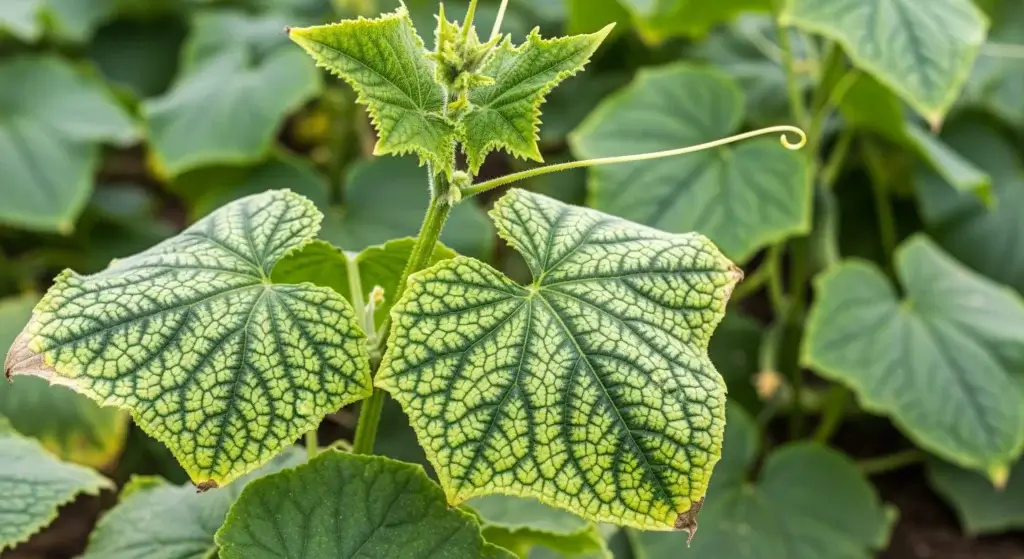
As winter settles in, many gardeners breathe a sigh of relief, thinking that pests and diseases are finally taking a break.
But here’s the kicker: winter isn’t the pest-free zone you might think.
Many garden invaders—both insects and pathogens—go into dormancy, biding their time until conditions are right to make a comeback, often stronger than before.
If you want your garden to thrive come spring, now’s the time to take action.
This guide will show you how to stay one step ahead of those pesky invaders with natural, low-cost methods that are easy to implement and super effective.
Let’s prep your garden for a healthy, vibrant season ahead!
Why Winter Pest and Disease Prevention Matters
You might think that once the garden goes into winter mode, pests and diseases do too.
But here’s the cold, hard truth: many of them are just hibernating, waiting for the perfect moment to make their grand reappearance.
Here’s why you should stay on guard:
- Pests overwinter: Insects like aphids, whiteflies, and even slugs find cozy hiding spots in plant debris, soil, or under mulch to survive the chill.
- Fungal spores hang around: Diseases like powdery mildew and rust can survive the winter tucked away in infected leaves or mulch, ready to cause trouble when it warms up.
- Spring starts now: The healthier you make your plants in winter, the more prepared they’ll be when spring rolls around. Early action helps avoid a garden disaster later.
By getting ahead of these winter pests and diseases now, you’ll save yourself plenty of headaches (and dollars) in the spring.
Think of it like preparing for a superhero showdown—if you’re ready, you’ll come out on top!
Clean Up Debris and Dead Plant Material
Dead plant material is like a winter vacation spot for pests and disease spores.
They love hiding out in fallen leaves, rotting fruit, and wilting stems.
If you don’t clear them out, they’ll invite trouble into your garden when spring comes.
Actionable steps:
- Clear out dead annuals, spent veggies, and dropped fruit — no party for pests here!
- Rake up any fallen leaves and compost only the healthy stuff.
- Toss or burn diseased plant material. No room for sick guests in the compost pile.
Pro tip: Gloves are your best friend here! Disinfect your tools with a bleach-water mix (1 part bleach to 9 parts water) after handling anything infected. Safety first, superhero gardeners!

Mulch Strategically
Mulch is like the cozy blanket your garden needs, but if you use it wrong, it can turn into a hiding spot for pests.
Here’s how to keep it working for you:
Best practices:
- Apply mulch 2–3 inches thick, but leave a little breathing room around plant stems and trunks. Don’t suffocate your plants!
- Stick to clean organic mulches like straw, bark, or leaf mold — steer clear of fresh grass clippings, which can get too hot and rot.
- Don’t pile mulch directly on top of dormant perennials — that’s like putting a wet towel over a sleeping plant. It’ll trap moisture and cause rot. No thanks!
Your garden will thank you for taking these preventative steps — it’s like giving it a winter spa day so it can come back strong and healthy in spring!
Prune Dead or Diseased Branches
Pruning in late fall or early winter isn’t just a “garden chore” — it’s your first line of defense against pests and disease.
Plus, it helps plants breathe easier by improving airflow and structure.
Focus on:
- Fruit trees: Cut away any mummified fruit (think of them as old leftovers) and prune crossing branches that might get in the way.
- Roses and shrubs: Snip off dead stems and canes to keep things clean and healthy.
- Perennials: Trim any foliage showing mildew or rot — it’s like giving your plants a little winter haircut.
Pro tip: Always use sharp, sanitized tools. You wouldn’t want to spread the bad vibes of one plant to another, right? Keep it clean!
Use Horticultural Oil and Dormant Sprays
Think of horticultural oils as the stealthy ninjas of pest control.
They sneak in and smother overwintering insect eggs and larvae without harming beneficial insects.
Basically, they’re doing the dirty work for you.
When and how:
- Apply during dormancy — late winter is ideal, just before those buds start to wake up.
- Target your fruit trees, roses, berry bushes, and evergreen shrubs — all prime targets for overwintering pests.
- Always follow label directions! Don’t spray when it’s freezing or if rain’s on the way — these oils need time to work their magic.
Bonus tip: Mix in neem oil for extra fungal protection. Neem also keeps pesky soft-bodied insects like aphids and mites in check, so it’s like adding a power-up to your garden’s defense system.

Improve Garden Hygiene
Think of garden hygiene as your plant’s version of a spa day — it’s a simple step that can save you a lot of future headaches.
Here’s the deal:
- Disinfect tools and pots: Clean off any dirt or plant residue from pots, seed trays, and garden tools to prevent the spread of pests and diseases.
- Rotate crops: Switching up where you plant your vegetables each year keeps pests and diseases from settling in one spot.
- Store soil and fertilizer safely: Keep unused soil or fertilizer in sealed containers. If you don’t, you’re basically rolling out the welcome mat for rodents and insects.
- Weed regularly: Weeds aren’t just an eyesore; they’re also hiding spots for pests and diseases. Treat them like the unwanted guests at your garden party — kick them out!
Attract Natural Predators
Your garden already has an army of natural pest controllers, and winter is no exception!
Many beneficial insects, birds, and ground critters stay active even in colder months, so why not encourage them to stick around?
- Ladybugs and lacewings: These heroes will feast on aphids and other pests. Provide leaf piles or even build a cozy bug hotel to give them a warm winter retreat.
- Birds: Put up a bird feeder or birdbath. Birds like chickadees and sparrows will swoop in to munch on overwintering larvae.
- Ground beetles: Keep a bit of low ground cover or stones to offer hiding spots. Ground beetles will thank you by hunting down pests lurking in the soil.
Pro tip: Skip the broad-spectrum pesticides, even in winter! They don’t just target bad bugs — they also wipe out the good guys. Keep your garden’s balance in check by letting nature do its thing.
Cover Vulnerable Plants
Think of floating row covers, cloches, and cold frames as your garden’s high-tech winter armor — they protect against both frost and pests.
- Brassicas (e.g., cabbage, kale): These leafy green superstars are magnets for aphids and slugs. Give them a protective shield to keep these pests at bay.
- Herbs like parsley and cilantro: They’re tasty to both us and whiteflies. A good cover will keep the bugs from munching on your herbs.
- Newly Planted Winter Greens or Garlic Beds: These delicate new plants need all the love and protection you can give — and a cover keeps pests and extreme cold away.
Pro tip: Make sure your covers are secured tight. Winter winds can be ruthless, so check the edges and inspect under the covers every week. Keep an eye out for any pests that might have snuck in or any mold trying to set up shop.
Monitor and Take Notes
Even though things are quieter in winter, your garden still needs your attention.
A quick weekly walk-through can save you from bigger issues later.
Things to watch for:
- Unusual spots on leaves: Is something starting to look off? Yellowing, browning, or spotting could be a sign of disease or pest trouble.
- Chewed foliage: If you’re in a milder climate, don’t be surprised if snails or aphids make an appearance — they’re still hungry during winter.
- Visible pests: Keep an eye out for any pests like aphids, snails, or borers — these guys don’t take winter off.
Track it all: Use a journal or digital app to record the key details: weather, pest sightings, treatments, and what’s worked (or hasn’t). This helps you stay ahead of the game for next winter.
Pro tip: Consistent note-taking is your garden’s version of keeping a diary. Over time, you’ll spot patterns and learn which methods work best for your climate, plants, and pests. Plus, you’ll be a seasoned pest management pro in no time.

Common Winter Garden Pests and How to Handle Them
| Pest | Where They Hide | Prevention Tips |
| Aphids | Undersides of leaves, new growth |
Neem oil spray, encourage ladybugs
|
| Slugs & Snails | Under mulch, rocks, leaf litter |
Remove debris, use copper tape or beer traps
|
| Spider Mites | Houseplants or indoor seedlings |
Increase humidity, neem or insecticidal soap
|
| Scale Insects | On stems of shrubs, trees |
Scrape off, apply dormant oil spray
|
| Rodents | Compost piles, mulch beds |
Keep compost covered, avoid food scraps outdoors
|
Conclusion: A Little Prevention Goes a Long Way
While your garden may appear dormant during winter, there’s still plenty going on beneath the surface.
By staying proactive — cleaning up, monitoring, and applying smart preventative strategies — you’re setting your garden up for success come spring.
Consider winter pest and disease prevention as your garden’s version of an investment.
It’s not just about fewer problems — it’s about healthier plants, less stress down the road, and more time kicking back in your garden when the flowers bloom.



